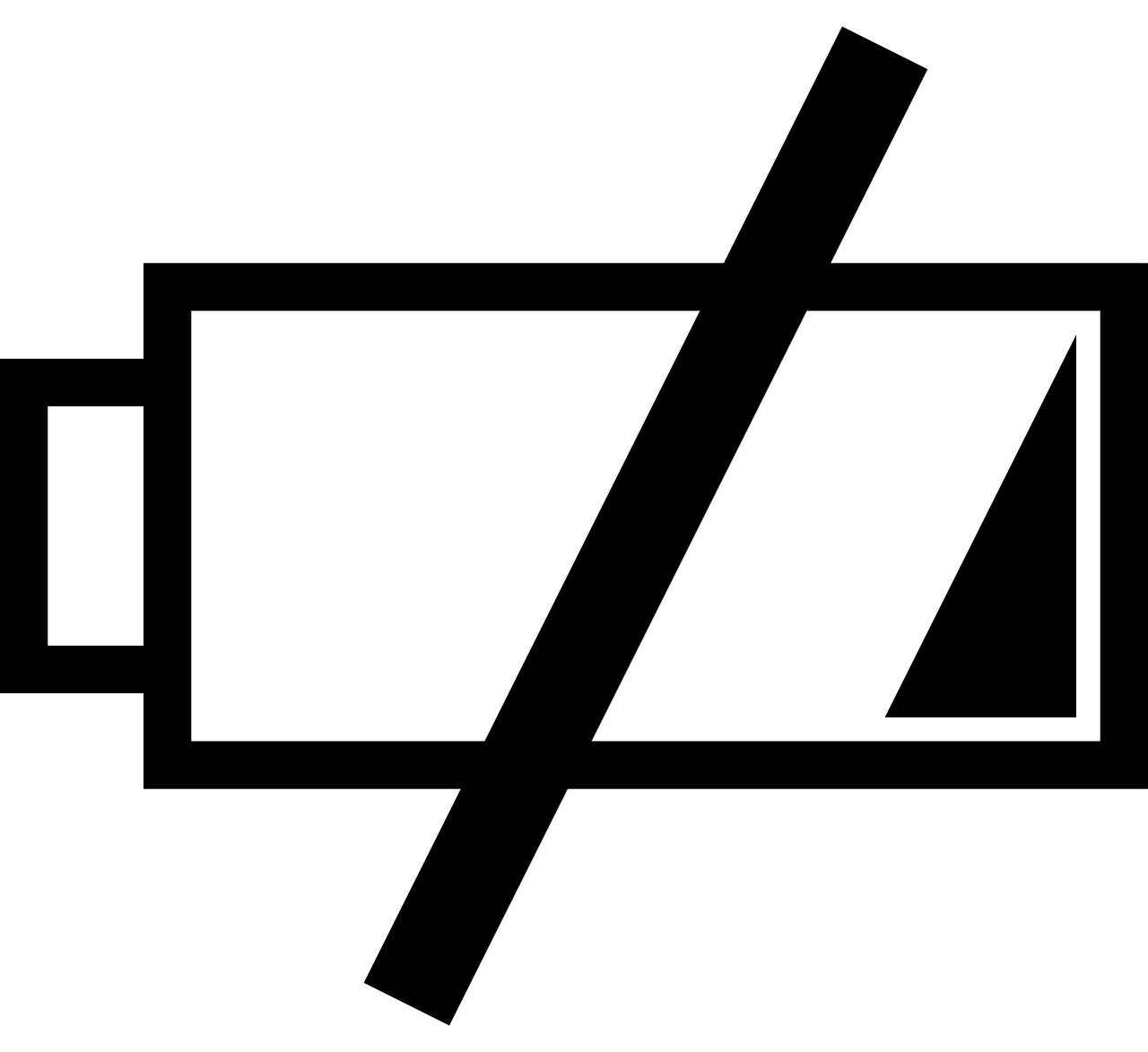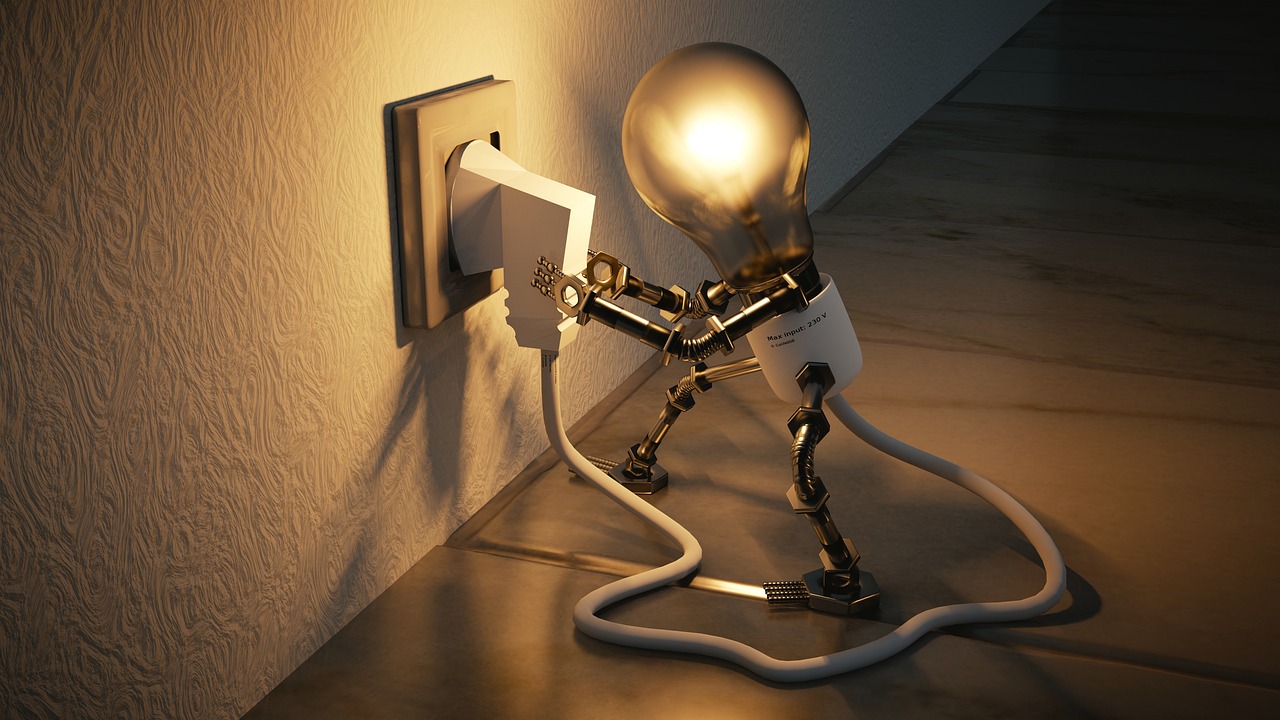Can the Lifepo4 Over Discharge? - Charge&Discharge Practices

The ability to manage the discharge of a lithium-ion battery is becoming increasingly important for many industries, particularly those that rely on energy storage solutions. Lifepo4 batteries are known for their high energy density and long lifespans, making them an ideal choice for applications such as electric vehicles, solar power systems, and medical devices. However, these benefits come with the risk of over discharging the battery if not managed properly. In this article, we will explore how Lifepo4 cells can be protected from over discharge in order to ensure safe operation.
In addition to understanding the causes behind over discharge, there are also preventive methods that can be implemented in order to protect against it. These include setting a minimum voltage limit and monitoring temperature levels inside each cell as well as using electronic protection circuits (EPC) that disconnect power supply if certain thresholds have been exceeded.
Finally, proper maintenance practices must be followed including regular charging cycles and avoiding deep cycling whenever possible which helps keep overall cycle life at maximum efficiency while protecting against potential failures caused by prolonged exposure to low voltages. By following these steps and understanding the risks involved with Lifepo4 cells, users can ensure their safety and obtain reliable performance out of their batteries now and into the future.
Definition Of Lifepo4 Battery

A LiFePO4 battery, also known as a lithium-iron phosphate battery, is a type of rechargeable battery that is becoming increasingly popular for use in home energy storage. It has many benefits compared to other types of batteries, including longer cycle life and greater safety.
The chemistry of the LiFePO4 battery consists of an anode made from iron phosphate and a cathode made from carbonate material. The electrolyte used in this type of battery is typically phosphate or sulfide, both of which are non-combustible materials. This makes it much safer than other lithium-ion batteries such as those using cobalt oxide or manganese oxide chemistries. Additionally, the lower voltage rating (3.2V) allows them to be safely charged at higher temperatures without the risk of thermal runaway events occurring.
The ability to withstand high-temperature charging coupled with its long cycle life makes LiFePO4 batteries ideal for applications where frequent deep cycles are necessary, such as electric vehicles and renewable energy systems. Furthermore, they offer excellent value for money due to their durability and low cost per charge/discharge cycle when compared to alternative technologies.
Advantages Of Lifepo4 Battery
A LiFePO4 battery offers a range of advantages that make it an ideal choice for use in various applications. By and large, the most significant advantage is its ability to withstand over-discharge more effectively than other types of lithium-ion batteries. This means that it can handle deep discharge cycles without damage or reduction in performance.
Additionally, as compared to other lithium-ion batteries, LiFePO4 cells offer longer lifespans due to their low rate of self-discharge and higher cycle life when stored properly. Moreover, these batteries are much lighter than traditional lead acid batteries; this makes them suitable for powering mobile devices like laptops and cell phones. Furthermore, they have excellent temperature stability which enables them to operate even at extreme temperatures.
Lastly, LiFePO4 batteries require very little maintenance since they do not need frequent charging and discharging in order to work efficiently. All these factors combined make LiFePO4 an attractive option when considering energy storage solutions in various scenarios.
Disadvantages Of Lifepo4 Battery
LiFePO4 batteries have many advantages, such as high energy density and good cycle life. However, they also have several disadvantages compared to other types of lithium-ion battery chemistries.
One major disadvantage is their sensitivity to over-discharge. LiFePO4 cells are more vulnerable to damage from deep discharging than other chemistries because they cannot tolerate a voltage lower than 2V per cell without permanent degradation or even destruction. This can be troublesome for applications that require full discharge cycles, as the user must ensure that the end voltage remains above this threshold. Over-discharge protection circuits can help with this issue by preventing the voltage from dropping too low, but these add cost and complexity.
In addition to being sensitive to over-discharging, LiFePO4 cells tend to suffer from poor cold temperature performance due to their higher internal resistance when exposed to temperatures below 0°C (32°F). This limits their usefulness in some climates and applications where low operating temperatures occur regularly.
Furthermore, these cells typically have smaller capacities than other lithium-ion chemistries at any given temperature range which further reduces their applicability in certain situations. Adequate planning and consideration of all potential environmental conditions should be taken into account prior to selecting battery chemistry for an application.
Overcharging And Overdischarging Explained

The previous section discussed the disadvantages of LiFePO4 batteries, such as their lack of temperature stability and capacity loss. Now it's time to discuss overcharging and overdischarging, two issues that can have a great impact on how well any battery performs.
Overcharging
Overcharging occurs when too much current is applied to a battery for an extended period of time. This causes the cells in the battery to become overly charged, resulting in rapid heat buildup within the cell which will eventually lead to permanent damage or even catastrophic failure. To prevent this from happening, most modern lithium-ion batteries include safety features such as voltage cutoffs and temperature monitoring systems that turn off charging if either gets too high.
Over discharging
Over-discharging happens when a battery is drained past its lower threshold voltage (LTV). If continued beyond this point, the lithium-ion cells inside may suffer irreversible damage due to excessive depletion.
Many devices now contain low-voltage protection circuits designed to shut down before this condition occurs. It's also important to remember that allowing your device’s battery life to drain completely should be avoided - instead, you should charge it up at least once every few months so that it remains healthy and ready for use.
Reasons For Lifepo4 Over discharge
Overdischarge of LiFePO4 batteries is a severe issue that can occur due to various reasons. A major cause for this is when the battery voltage drops below its discharge limit, usually 2V per cell or 3V/cell in some cases. This can be caused by an excessive drain from the load, charging errors, problems with internal components such as cells and wiring, or failure of system protection circuits. Low temperatures also increase the risk of over discharging LiFePO4 batteries because less current flows through the cell at lower temperatures.

The effects of over-discharge are serious and may include permanent capacity loss, reduced cycle life, increased self-discharge rate and even thermal runaway leading to fire and explosion hazards. To prevent these issues it is important to carefully monitor charge levels and ensure proper system design and operation procedures are followed.
The use of BMS systems with advanced features such as balancing algorithms can reduce the chances of an incident occurring. Additionally, it is essential to carefully select chargers suited to their application; too high of a charge rate can quickly lead to irreversible damage if left unchecked.
How To Prevent Lifepo4 Over Discharge
In a nutshell, overdischarge of LiFePO4 batteries can be avoided through vigilance and care. It is important to ensure that all safety protocols are strictly followed in order to prevent any damage or malfunction of the battery. Here are some tips for preventing overdischarge:
- Monitor voltage levels regularly - Measure the open circuit voltage (OCV) at regular intervals during storage and use. This will help identify any drop in cell voltage which may indicate an impending over-discharge event.
- Pay attention to temperature fluctuations - Temperature changes can affect the performance of a LiFePO4 battery, so it’s important to keep track of both ambient temperatures as well as those within the cells themselves.
- Set alarms for potential low voltages - Setting alarm thresholds for lower-than-ideal OCV values will alert operators when action needs to be taken before any serious harm is done.
- Limit discharge current - Limiting maximum load currents helps avoid high drain rates from causing thermal runaway situations where there is the insufficient cooling capacity to dissipate heat generated by the increased power demand.
- Balance charge periodically - The individual cells should be balanced charged every few months to maintain their uniformity across all cells while also ensuring they do not drop into deep discharge states due to unbalanced usage patterns.
These measures can go a long way towards prolonging battery life and avoiding costly repairs or replacements resulting from excessive discharging events. By following these guidelines and keeping proper maintenance records, users can enjoy reliable operation with minimal risk of unexpected outages caused by sudden failure of their LiFePO4 batteries due to over-discharge.
Impact Of Overdischarge On Battery Performance
The impact of overdischarge on LiFePO4 batteries can be severe and lead to reduced performance. Overdischarging a battery results in an irreversible loss of capacity, meaning the battery will no longer hold as much charge as it did before being discharged past its safety cut-off threshold. This damage is cumulative and worsens with every additional discharge cycle beyond the safe amount.
| Effect | Description |
|---|---|
| Reduced Capacity | The total energy stored by the battery is permanently lowered due to degradation caused by overdischarge |
| Longer Charge Times | Due to less available capacity, charging takes longer than normal when compared to what was initially observed for the same current rate of charge at full capacity |
| Shorter Discharge Cycles | Similarly, lower capacity means shorter run times between charges; even if a device draws the same amount of power from the battery during each cycle, that time period will become shorter with repeated cycles where there has been an extended overdischarge event |
| Possible Damage To Cells Inside Battery Pack | Depending on the severity and duration of over discharging event, internal components may short circuit or degrade causing further reduction in capacity and possibly leading to complete failure if not addressed promptly after the occurrence. |
When designing materials handling systems using LiFePO4 technology it is important to consider how this chemistry reacts under conditions outside their recommended operating parameters since these reactions could cause serious harm both financially and operationally.
It is imperative that users understand all aspects related to optimal usage including safe upper/lower voltage thresholds, temperature ranges, storage requirements etc., so they are able to properly handle any unexpected events within those limits without compromising system integrity.
Significance Of Balancing Cells
When a lithium-ion battery is deep discharged, it can cause irreversible damage if not managed properly. To prevent this from happening, cell balancing must be used to ensure the cells in a battery are kept at an equal voltage level during discharge and charge cycles. This helps maintain the consistent performance of the entire pack as well as extend its lifespan.
Cell balancing is also important for overall safety since it prevents overcharging or over discharging any individual cell in the battery pack. Overcharging or discharging one cell will result in increased energy losses due to heat generation while simultaneously reducing the cycle life of other cells connected in series with that particular cell. It also increases the risk of thermal runaway which could lead to catastrophic events such as fires or explosions.
| Benefit | Description | Example |
|---|---|---|
| Performance Consistency | Maintaining even voltages across each cell ensures optimal performance throughout all charge/discharge cycles | Equal current delivery between cells allows for smooth power output from the system |
| Safety & Longevity | Balancing reduces risks associated with overcharged/discharged cells and prolongs the useful life of the battery system by avoiding premature aging of components | Protection against potential fire hazards caused by imbalances in current flow within the battery pack |
| Energy Efficiency | Properly balanced cells limit wasted energy through heating by ensuring there isn't too much current flowing through any single cell | Minimized heat loss results in higher efficiency levels and greater cost savings |
Cell balancing provides numerous benefits including improved safety, enhanced longevity, and increased efficiency when applied correctly; however, it requires additional costs and resources which should be taken into consideration prior to implementation. Balancing also has limitations where certain configurations may require custom solutions based on specific requirements such as size constraints or operating environment conditions.
Ultimately, careful assessment of the pros and cons is necessary before making an informed decision about whether or not to utilize these technologies for any given application.
Benefits Of BMS System

The installation of a Battery Management System (BMS) offers several advantages to the operation and maintenance of lithium-ion batteries. A BMS maximizes battery performance, lifespan and safety when correctly applied; these benefits are outlined below:
Maximizing Performance
- Improved cycle life: The inclusion of a BMS ensures that cells remain within their optimal charging parameters to maximize cycle life. This is especially important with LiFePO4 batteries as they can be easily over discharged which will dramatically reduce their lifespan.
- Increased availability: By ensuring all cells in an array remain balanced, load-sharing capabilities can be improved resulting in increased system availability.
Maximizing Lifespan
- Maximized capacity retention: A BMS helps to ensure that maximum operating temperature limits are not exceeded which minimizes cell aging, thereby preserving cell capacity for longer periods.
- Reduced downtime: Properly monitoring the state of health of each individual cell helps prevent unexpected failures due to incorrect settings or excessive wear and tear on single cells leading to reduced downtime costs.
Safety Benefits
- Enhanced safety features: In combination with other safety measures such as fusing or interlocks, a BMS provides additional protection against short circuits and overvoltage conditions by actively monitoring the status of cells and disconnecting them if necessary.
- Fast response time: As mentioned before, a BMS has very fast response times meaning it can rapidly detect fault conditions before serious damage occurs leading to cost savings from reduced repairs or replacements.
In addition to providing numerous benefits for both performance and longevity, using a BMS also saves money in terms of energy consumption costs - maximizing efficiency while minimizing waste through active management techniques thus increasing overall profitability for users.
Alternatives To Lifepo4 Battery
The BMS system offers a range of benefits and improved performance when using LiFePo4 batteries. However, there are several alternatives to the LiFePo4 battery that can be considered for different applications.
| Lead Acid BatteryNCM BatteryLiFePO4 Battery | |||
|---|---|---|---|
| Composition | Lead acid electrolyte in an ABS or Polypropylene container | AA cells with nickel-cadmium electrodes in an ABS container | Cells with lithium iron phosphate in an ABS container |
| Power Density | 30W/Kg | 40W/Kg | 120 W/Kg |
| Efficiency | 65%-75% | 75%-85% | 90%-95% |
| Weight | Weight | Light | Lightest |
When considering a suitable alternative to LiFePo4, each type of battery will have its own set of advantages and disadvantages. For example, lead acid batteries are the most affordable option but they also offer relatively lower power density and energy efficiency compared to NiMH and LiFePO4.
On the other hand, NiMH batteries provide higher power density than lead acid but their cost is slightly more expensive and weight lighter than lead acid. Lastly, LiFePO4 provides both high power density as well as excellent energy efficiency. However, it comes at a greater expense than its counterparts.
In addition to weighing up the various factors mentioned above such as cost, power density and efficiency; another important consideration concerns discharging which occurs when a battery’s voltage drops too low resulting in permanent damage or shortening of its lifespan. With regards to this issue, all three types -lead acid, NiMH and LiFePo4 are prone to over-discharge if not monitored correctly by means of a robust BMS system.
Charge Management Strategies

Excessive discharge of LiFePO4 batteries can have devastating consequences. When pushed beyond their safe limits, these cells may suffer irreversible damage to the chemistry and cause permanent capacity loss or other safety concerns. To protect against this risk, battery management systems (BMS) are employed to monitor voltage levels and disconnect loads when necessary. In addition, restricting charge currents and balancing cell voltages across packs help maintain an even distribution of energy throughout the system for maximum efficiency.
The challenge with managing LiFePO4 cells is that their behavior is not as predictable as some other chemistries like lead-acid batteries; therefore it requires more monitoring and careful attention from users. The main issue is overcharging, which results in increased internal temperatures leading to thermal runaway.
A BMS should be set up to shut off charging above a certain voltage threshold and also provide periodic maintenance cycles depending on usage patterns. This will help increase overall performance by evenly distributing charge within the pack while protecting against premature aging due to stressors such as temperature cycling or deep discharges.
Maintenance Tips And Guidelines

The consequences of over-discharging a lithium-ion battery, such as LiFePO4, can be severe and cause permanent damage. A key factor in preventing this is understanding the charge management strategies associated with these types of batteries. It is important to abide by their recommended cycle life parameters for optimal performance and longevity. To ensure that your battery does not become over discharged, it should never be left depleted or unused for an extended period of time.
In addition to following the guidelines outlined above, there are several maintenance tips that can help keep your LiFePO4 battery in good condition: always use a quality charger designed specifically for LiFePO4 batteries; avoid leaving your battery on full discharge until nearly empty; store at room temperature when possible; monitor voltage levels regularly; inspect terminals and connectors frequently; and maintain proper ventilation while charging.
Following these suggestions will extend the life of your LiFePO4 battery and minimize the risk of it becoming over-discharged. Ultimately, taking preventive measures to protect against over discharging a lithium-ion battery like LiFePO4 is essential to its overall health and performance.
Conclusion
The use of LiFePO4 batteries can be a beneficial choice for many applications, as they offer advantages such as higher energy density and longer life cycles. However, this technology also comes with some disadvantages, most notably the risk of over discharging which can cause reduced performance or even damage to the battery. To ensure that users get the maximum benefit from their LiFePO4 battery, it is important to understand why over discharge occurs and what strategies are available to mitigate its effects.
LiFePO4 batteries have great potential for many applications but require careful consideration regarding their usage and care in order to achieve optimal results. With proper change management strategies in place along with regular maintenance checks and safety precautions observed, users will enjoy the benefits of high-performance lithium-ion batteries without having to worry about overdischarging them.
